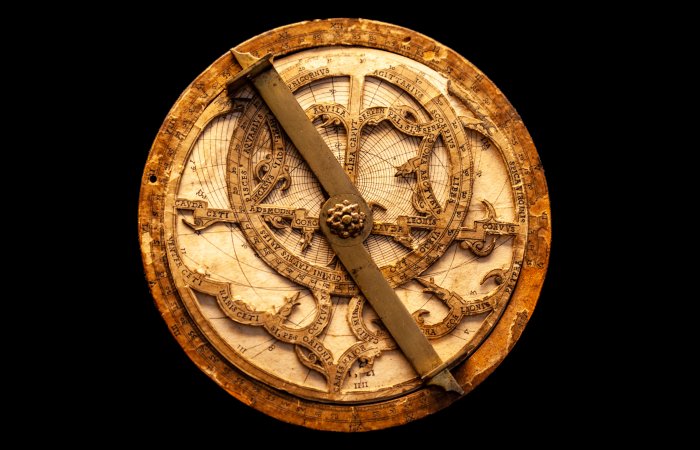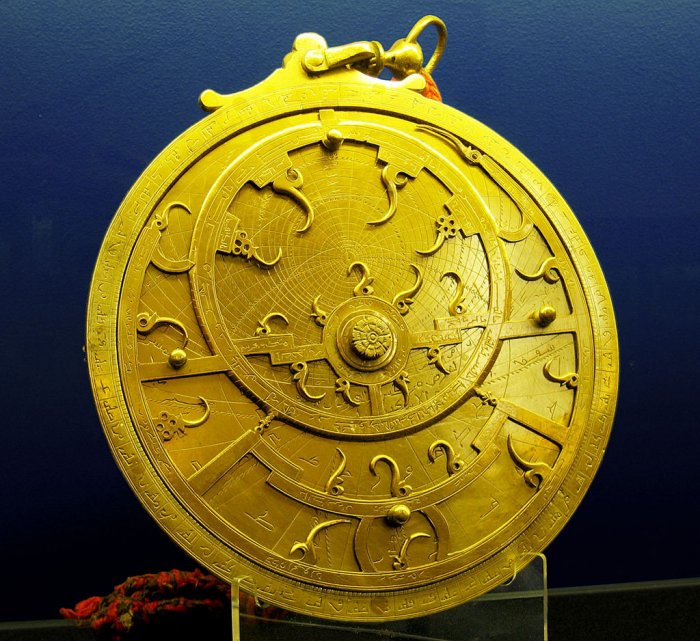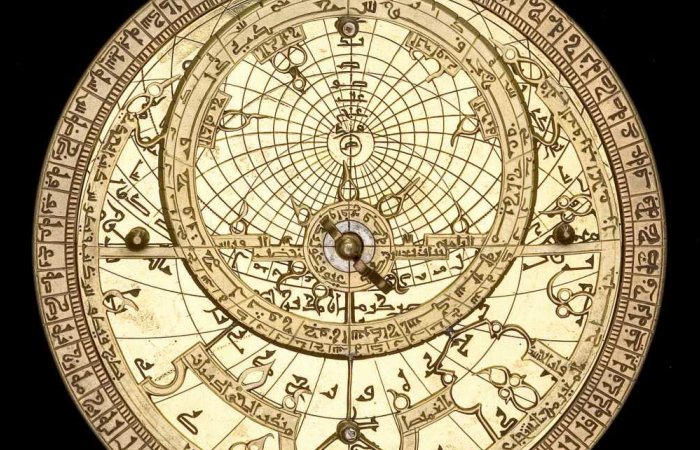Astrolabe: A Beautiful, Mysterious And Sophisticated Computer Of The Ancient World
A. Sutherland - AncientPages.com - The astrolabe is a beautiful ancient object. It is fair to say it is an instrument with a past and future. It is also a sophisticated ancient astronomical computer especially created for solving problems related to time and the position of the Sun and stars in the sky.
Credit: Adobe Stock - markrhiggins
In most cases, the astrolabes were made of brass and had a 6-inch diameter. Some of the objects were much larger.
The oldest astrolabes date back to two thousand years ago. Among the most popular types is the planispheric astrolabe, on which the celestial sphere is projected onto the plane of the equator. Despite being created at a time when people thought that the Earth was the center of the universe, the astrolabe is a useful ancient tool.
The object operates on the same basis as any other modern computer. You provide it with data, that is, input information, and then you receive output.
Ancient people used astrolabes to find out how the sky looked at a specific place at a given time. It was done by drawing the sky on the face of the astrolabe and marking it, so positions in the sky were easy to find.
An 18th Century Persian astrolabe–maker unknown. The points of the curved spikes on the front rete plate, mark the positions of the brightest stars. The name of each star being labeled at the base of each spike. The backplate or mater is engraved with projected coordinate lines. From the Whipple Museum of the History of Science in Cambridge. Image credit: Andrew Dunn - CC BY-SA 2.0
To use an astrolabe, you adjust the moveable components to a specific date and time. Once set, much of the sky, both visible and invisible, is represented on the face of the instrument.
This clever ancient computer was mainly used to find the time during the day or night, the time of a celestial event such as sunrise or sunset, and as a reference for stellar positions.
During the late Middle Ages, it served as a primary education astronomy tool and was sometimes even used for astrological purposes.
The typical astrolabe was not a navigational instrument. However, the mariner's astrolabe was widely used in the Renaissance. The device can measure the altitude above the horizon of a celestial body, day or night, identify stars and planets, determine local latitude on land or calm seas, and survey.
Astrolabe made between 1081 and 1082. Credit: History of Science Museum - CC BY-SA 4.0
The astrolabe was important in classical antiquity, the Islamic Golden Age, and the European Middle Ages. The name 'astrolabium' refers to the so-called prismatic astrolabe, invented by the French astronomer André Danjon.
The early astrolabe was invented in the Hellenistic civilization by Apollonius of Perga between 220 and 150 BC, often attributed to Hipparchus, a Greek mathematician, geographer, and astronomer who lived in the 2nd century BC. The essential part of the astrolabe is a brass plate with the lines of the celestial body's height above the horizon. It also has azimuth lines, and the hour wheels were engraved. Through the center of the plate was a line marking the north pole of the sky.
Hypatia (c. 350–370; died 415 AD), a great ancient scholar, built many astrolabes, but she did not invent them. The astrolabe was already in use at least 500 years before Hypatia was born.
Today, the astrolabe is still admired for its beauty and appreciated for its unique capabilities and its value for astronomy education.
Written by – A. Sutherland - AncientPages.com Senior Staff Writer
Updated on March 4, 2024
Copyright © AncientPages.com All rights reserved. This material may not be published, broadcast, rewritten or redistributed in whole or part without the express written permission of AncientPages.com
Expand for referencesMore From Ancient Pages
-
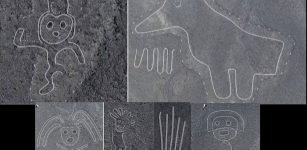 168 Unknown Geoglyphs Discovered In The Nazca Desert By Drones
Archaeology | Dec 19, 2022
168 Unknown Geoglyphs Discovered In The Nazca Desert By Drones
Archaeology | Dec 19, 2022 -
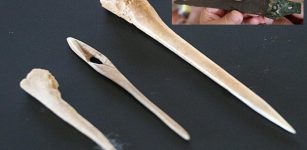 8,600-Year-Old Bone Needles Found In Denizli Closely Associated With Old Textile Tradition
Artifacts | Sep 2, 2020
8,600-Year-Old Bone Needles Found In Denizli Closely Associated With Old Textile Tradition
Artifacts | Sep 2, 2020 -
 Kantyua And Tantyua – Sacred Tibetan Books Reveal Incredible Lifespan Of The Gods
Artifacts | Mar 18, 2019
Kantyua And Tantyua – Sacred Tibetan Books Reveal Incredible Lifespan Of The Gods
Artifacts | Mar 18, 2019 -
 Ancient Maya: Wealth Inequality And Despotism That Governed The Society
Archaeology | Mar 26, 2021
Ancient Maya: Wealth Inequality And Despotism That Governed The Society
Archaeology | Mar 26, 2021 -
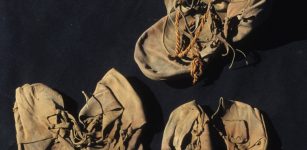 Unsolved Ancient Mystery: Why Were These Foreign Shoes Hidden In A Temple?
Archaeology | Mar 29, 2014
Unsolved Ancient Mystery: Why Were These Foreign Shoes Hidden In A Temple?
Archaeology | Mar 29, 2014 -
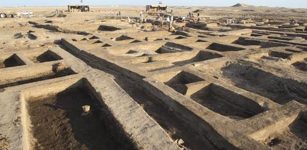 Remains of Santorini Volcanic Eruption Discovered West Of Suez Canal
Archaeology | Jan 3, 2016
Remains of Santorini Volcanic Eruption Discovered West Of Suez Canal
Archaeology | Jan 3, 2016 -
 Mystery Of Vangchhia Ancient Site: Water Pavilion And Ingenious Idea Of Water Harvesting
Archaeology | Feb 21, 2019
Mystery Of Vangchhia Ancient Site: Water Pavilion And Ingenious Idea Of Water Harvesting
Archaeology | Feb 21, 2019 -
 Does A Baffling Artifact Offer Evidence Of Ancient Extraterrestrial Visitation In New Zealand? – The Discovery – Part 1
Featured Stories | Jul 20, 2020
Does A Baffling Artifact Offer Evidence Of Ancient Extraterrestrial Visitation In New Zealand? – The Discovery – Part 1
Featured Stories | Jul 20, 2020 -
 Mag Mell: Irish Tradition Of Otherworldly Paradise That Could Be Reached Through Death And Glory
Celtic Mythology | Feb 26, 2019
Mag Mell: Irish Tradition Of Otherworldly Paradise That Could Be Reached Through Death And Glory
Celtic Mythology | Feb 26, 2019 -
 Five Rare Bronze Age Axe Heads Found In Polish Forest
Archaeology | Dec 8, 2023
Five Rare Bronze Age Axe Heads Found In Polish Forest
Archaeology | Dec 8, 2023 -
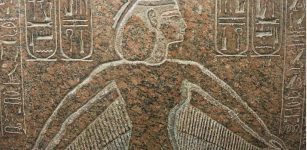 Nephthys – Egyptian Funerary Goddess Who Also Protected The Pharaohs While They Were Alive
Featured Stories | Aug 15, 2021
Nephthys – Egyptian Funerary Goddess Who Also Protected The Pharaohs While They Were Alive
Featured Stories | Aug 15, 2021 -
 Strange Case Of A Victim Who Solved Her Own Murder – Unusual Powers Of The Human Mind
Featured Stories | Feb 15, 2019
Strange Case Of A Victim Who Solved Her Own Murder – Unusual Powers Of The Human Mind
Featured Stories | Feb 15, 2019 -
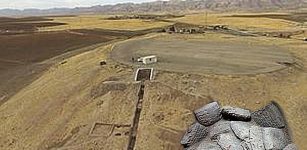 Bassetki Cuneiform Tablets Reveal Location Of Lost City Of Mardaman In Northern Mesopotamia
Archaeology | May 14, 2018
Bassetki Cuneiform Tablets Reveal Location Of Lost City Of Mardaman In Northern Mesopotamia
Archaeology | May 14, 2018 -
 Bizarre Event – Why Did Hundreds Of Individuals Suddenly Freak Out At A Cemetery?
Featured Stories | May 30, 2023
Bizarre Event – Why Did Hundreds Of Individuals Suddenly Freak Out At A Cemetery?
Featured Stories | May 30, 2023 -
 Could Neanderthals Meditate? Scientists Investigate
Archaeology | Jun 30, 2022
Could Neanderthals Meditate? Scientists Investigate
Archaeology | Jun 30, 2022 -
 What Were The Most Important Inca Laws That All Citizens Had To Respect?
Ancient History Facts | Aug 16, 2017
What Were The Most Important Inca Laws That All Citizens Had To Respect?
Ancient History Facts | Aug 16, 2017 -
 Ingvar Vittfarne: Viking Chieftain And His Tragic Expedition To The East
Featured Stories | Jul 21, 2022
Ingvar Vittfarne: Viking Chieftain And His Tragic Expedition To The East
Featured Stories | Jul 21, 2022 -
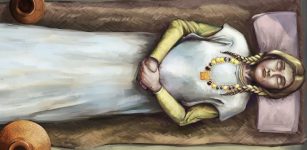 Spectacular Anglo-Saxon Burial Uncovered – Here’s What It Tells Us About Women In Seventh-Century England
Featured Stories | Dec 17, 2022
Spectacular Anglo-Saxon Burial Uncovered – Here’s What It Tells Us About Women In Seventh-Century England
Featured Stories | Dec 17, 2022 -
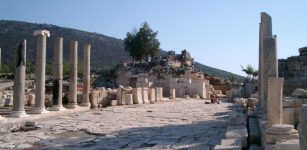 Reconstruction Of Five-Story Patara Lighthouse Built By Roman Emperor Nero – Begins
Archaeology | May 30, 2019
Reconstruction Of Five-Story Patara Lighthouse Built By Roman Emperor Nero – Begins
Archaeology | May 30, 2019 -
 Astronomically Aligned Temples And Pyramids Of Ancient World
Featured Stories | Dec 10, 2021
Astronomically Aligned Temples And Pyramids Of Ancient World
Featured Stories | Dec 10, 2021

